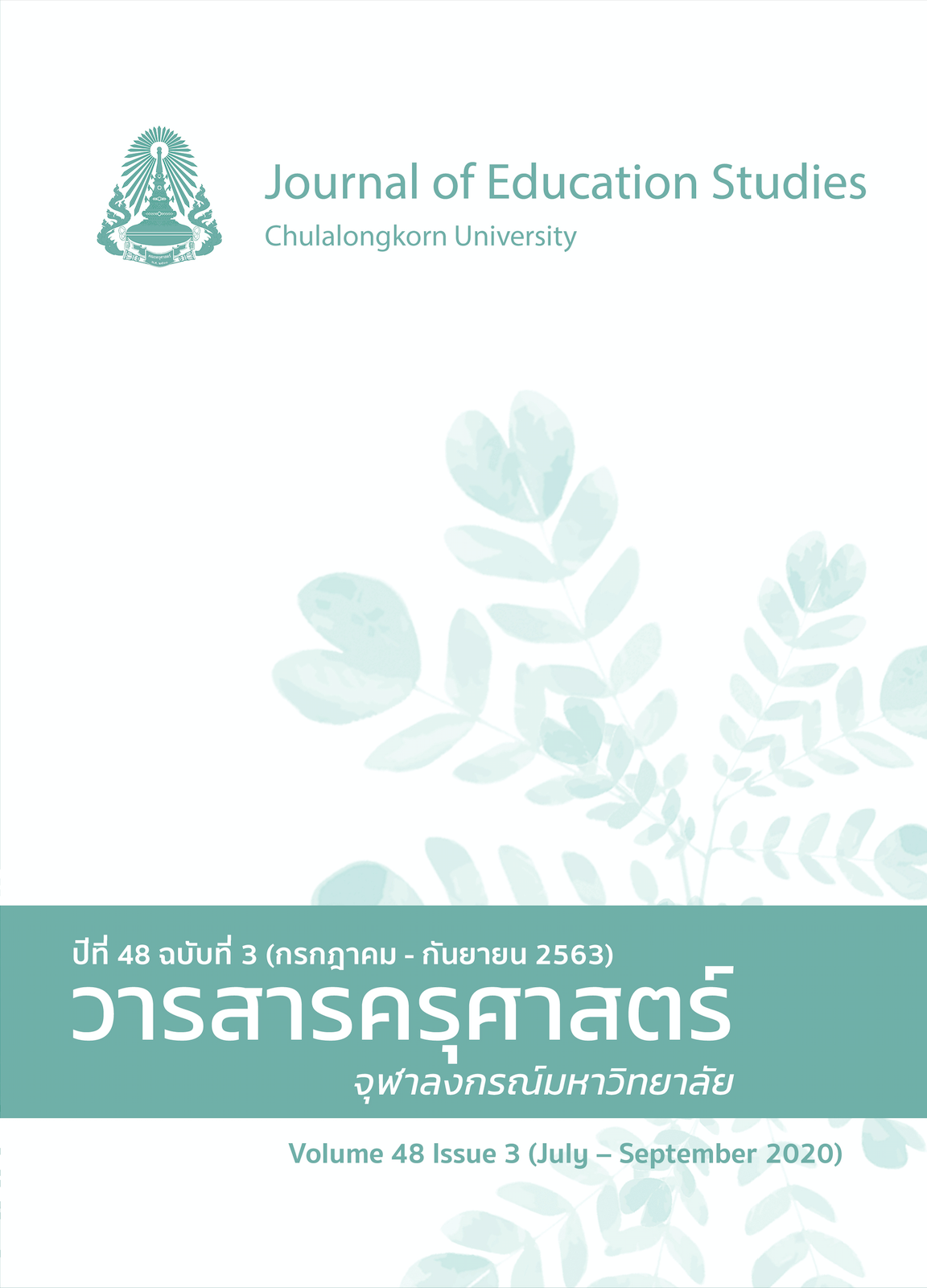Integrated Teaching and Learning Management for the Development of Higher Order Thinking Skills: Learning to Practice
Keywords:
integrated instruction, higher order thinking skillsAbstract
Integrated instructional management enables learners to understand the content in a holistic manner and see the correlation between each subject. It can also link other meaningfully related content, leading students to develop higher-level thinking. In addition to the integration activities, group learning or interdisciplinary, it makes the students think of linking and analyzing from practice, not just through the memorization of textbooks. Moreover, students have fun learning. They have better interaction with teachers and classmates, and further develop their moral skills.
References
กระทรวงศึกษาธิการ. (2552). หลักสูตรแกนกลางการศึกษาขั้นพื้นฐาน พุทธศักราช 2551. ชุมนุมสหกรณ์การเกษตรแห่งประเทศไทย.
จรรยา ดาสา. (2552). 15 เทคนิคในการจัดการเรียนรู้ที่เน้นการเรียนเชิงรุก. นิตยสาร สสวท., 36(163), 72-76.
ทิศนา แขมมณี และคณะ. (2544). วิทยาด้านการคิด. เดอะมาสเตอร์กรุ๊ป แมเนจเม้นท์.
ทิศนา แขมมณี. (2548). ศาสตร์การสอน (พิมพ์ครั้งที่ 4). ด่านสุทธาการพิมพ์.
ทิศนา แขมมณี (2550). ศาสตร์การสอน: องค์ความรู้เพื่อการจัดกระบวนการเรียนรู้ที่มีประสิทธิภาพ (พิมพ์ครั้งที่ 5). สำนักพิมพ์แห่งจุฬาลงกรณ์มหาวิทยาลัย.
ปริณดา ลิมปานนท์ พรหมรัตน์. (2558). เทคนิคการตั้งคำถามตามแนว Bloom สู่การสร้างแบบสอบ. EDUCA. www.educathai.com/upload/content/file_1447182498.pdf
วิวัฒน์ มีสุวรรณ์. (2555, 25 กันยายน). Bloom's revised taxonomy in 2001. http://wiwatmee.blogspot.com/2012/09/blooms-revised-taxonomy-in-2001.html
ศิริชัย กาญจนวาสี. (2556). ทฤษฎีการทดสอบแบบดั้งเดิม (พิมพ์ครั้งที่ 7). สำนักพิมพ์แห่งจุฬาลงกรณ์มหาวิทยาลัย.
สนธิ พลชัยยา. (2557). สะเต็มศึกษากับการคิดขั้นสูง. นิตยสาร สสวท., 42(189), 7-10.
สำนักงานคณะกรรมการการศึกษาแห่งชาติ. (2545). พระราชบัญญัติการศึกษาแห่งชาติ พ.ศ. 2542 และที่แก้ไขเพิ่มเติม (ฉบับที่ 2) พ.ศ. 2545. พริกหวานกราฟฟิค.
สิริพัชร์ เจษฎาวิโรจน์. (2546). การจัดการเรียนการสอนแบบบูรณาการ. บุ๊ค พอยท์.
สุวิทย์ มูลคำ และ อรทัย มูลคำ. (2546). 19 วิธีจัดการเรียนรู้: เพื่อพัฒนาความรู้และทักษะ. ภาพพิมพ์.
อุษณีย์ โพธิสุข และคณะ. (2544). สร้างสรรค์นักคิด: คู่มือการจัดการศึกษาสาหรับผู้มีความสามารถพิเศษด้านทักษะความคิดระดับสูง. รัตนพรชัย.
ภาษาอังกฤษ
Anderson, L. W., & Krathwohl, D. R. (2001). A taxonomy for learning, teaching, and assessing. Longman.
Berlin, D. F., & Lee, H. (2005). Integrating science and mathematics education: Historical analysis. School Science and Mathematics, 105(1), 15-24.
Gonzalez, J. (2012). Promoting higher order thinking in mathematics [Unpublished master’s thesis]. Kean University.
Heong, Y. M., Yunos, J. B. M., Hassan, R. B., Othman, W. B., & Kiong, T. T. (2011). The perception of the level of higher order thinking skills among technical education students. In C. H. Lin & C. M. Zhang (Eds.), International conference on social science and humanity IPEDR, Vol.5 (pp. 281-285). IACSIT.
Kevin, C. C. (2015, February 1). Research supporting integrated curriculum: Evidence for using this method of instruction in public school classrooms. ERIC. https://files.eric.ed.gov/fulltext/ED552916.pdf
Lake, K. (2002). Integrated curriculum. Education Northwest. https://educationnorthwest.org/sites/default/files/integrated-curriculum.pdf
Malik, A., & Malik, R. (2011). Twelve tips for developing an integrated curriculum. Medical Teacher, 33(2), 99-104.
Rajendran, N. S. (2008). Teaching & acquiring higher-order thinking skills: Theory & practice. Universiti Pendidikan Sultan Idris.
Wang, H. L., & Shih, H. (2003). The use of the integrated thematic instruction model (ITIM) in English education in Taiwan in the 21st century. http://www.hiceduation.org/edu_proceedings/Hui%20_%20chich%20Laura%20Wang.pdf




